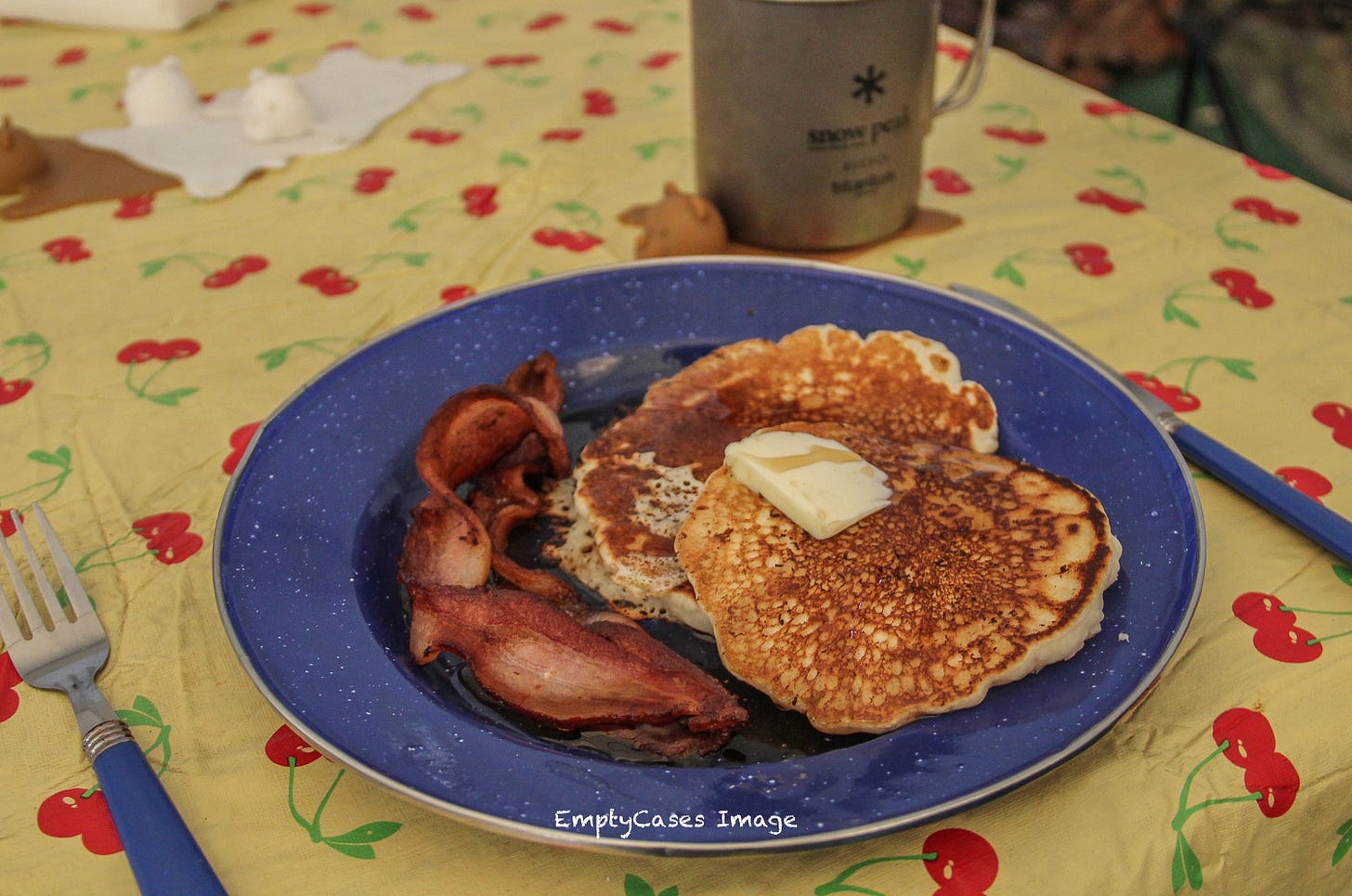
It used to be common for a rifle shooter to pull a target out of his wallet with three to five bullet holes punched through it that formed a nice, tight cluster. Generally, these groups measured less than an inch center to center, and sometimes they were just one ragged hole. That’s how rifle shooters used to brag – with evidence – about how well they or their rifles shot. You don’t see that anymore, mostly because now we take a photo of our bragging groups with a cell phone. The evidence is the same, but a photo just doesn’t carry the same gravitas of a wallet-worn, real target.
Of course, back in the day, the itty-bitty bragging groups were not as common. I generally test around two dozen different rifles every year and it’s rare if I don’t shoot a bragging group with every single one of them. Just the other day I tested a new Savage Axis 2 Pro rifle and shot several groups with Hornady’s Precision Hunter ELD-X load that measured less than an inch. That rifle has a suggested retail price of $600. Modern factory-made rifles and ammunition perform very well.
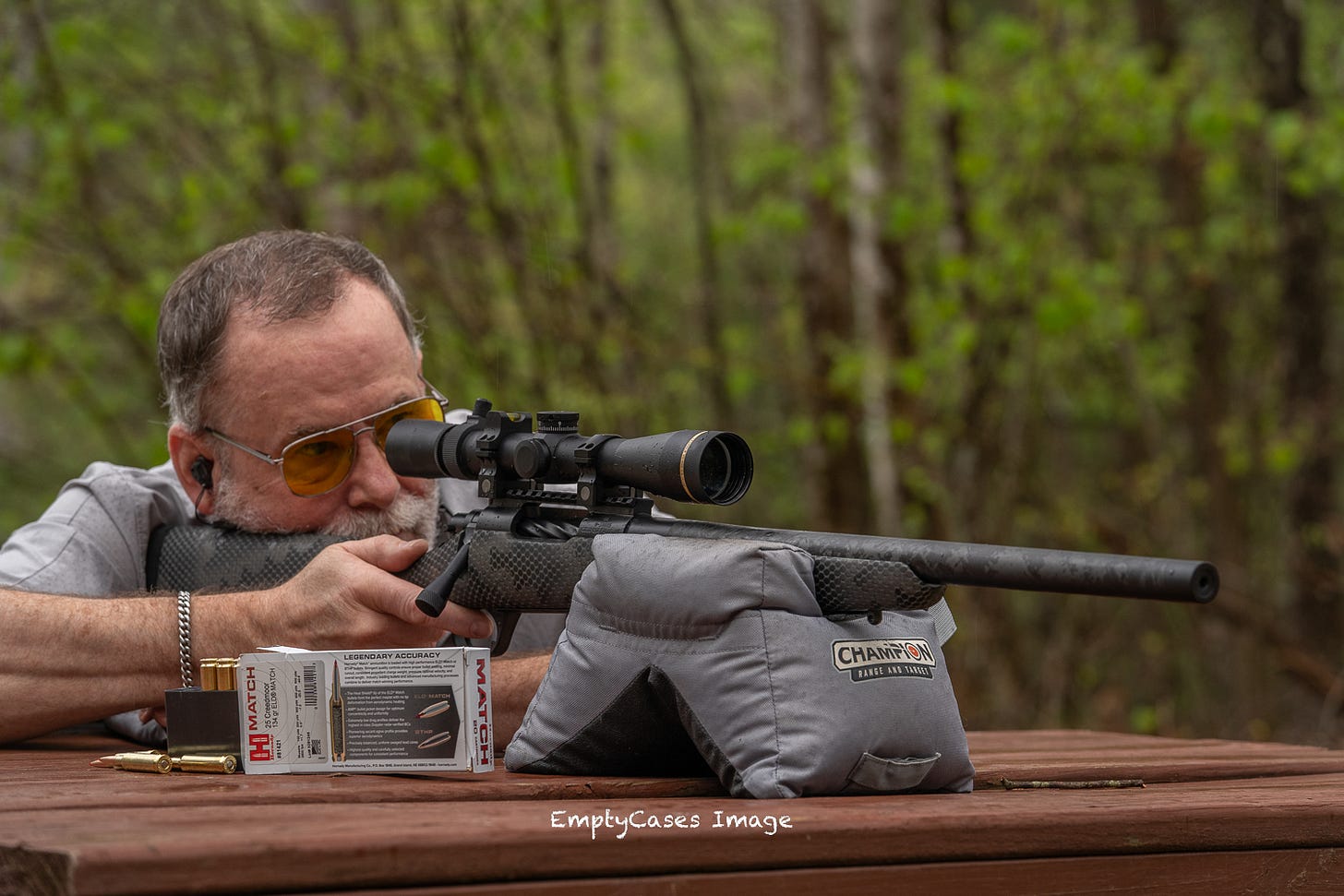
When I review a rifle, every publication I write for wants me to report – with detailed measurements – how well it shot from the bench. They usually present this information in a chart with velocity and energy figures for each load, along with either individual or average group sizes. Outdoor Life even goes as far as listing the mean radius. Readers consume this information with relish, like it provides an unequivocal representation of the precision that model of rifle will provide. It doesn’t. It only tells you how well that singular rifle and shooter performed. It might be an indicator of performance potential, but it’s a long, long way from definitive proof
Of course, to satisfy my editors and apparently the readers, I must comply with this group measurement protocol. However, for hunters I think it is mostly a big frigging waste of time. Just yesterday I handloaded some ammunition for a rifle I’ll be taking to Africa in a couple weeks, and then I zeroed it. I never used a caliper or even a ruler to measure a single group, but I know the rifle and the ammunition are up to the task. In fact, at least for my personal use, I’ve adapted a new protocol to confirm that. The sad part is I’m apparently so damned stupid it’s taken me nearly a half-century to come to my senses.
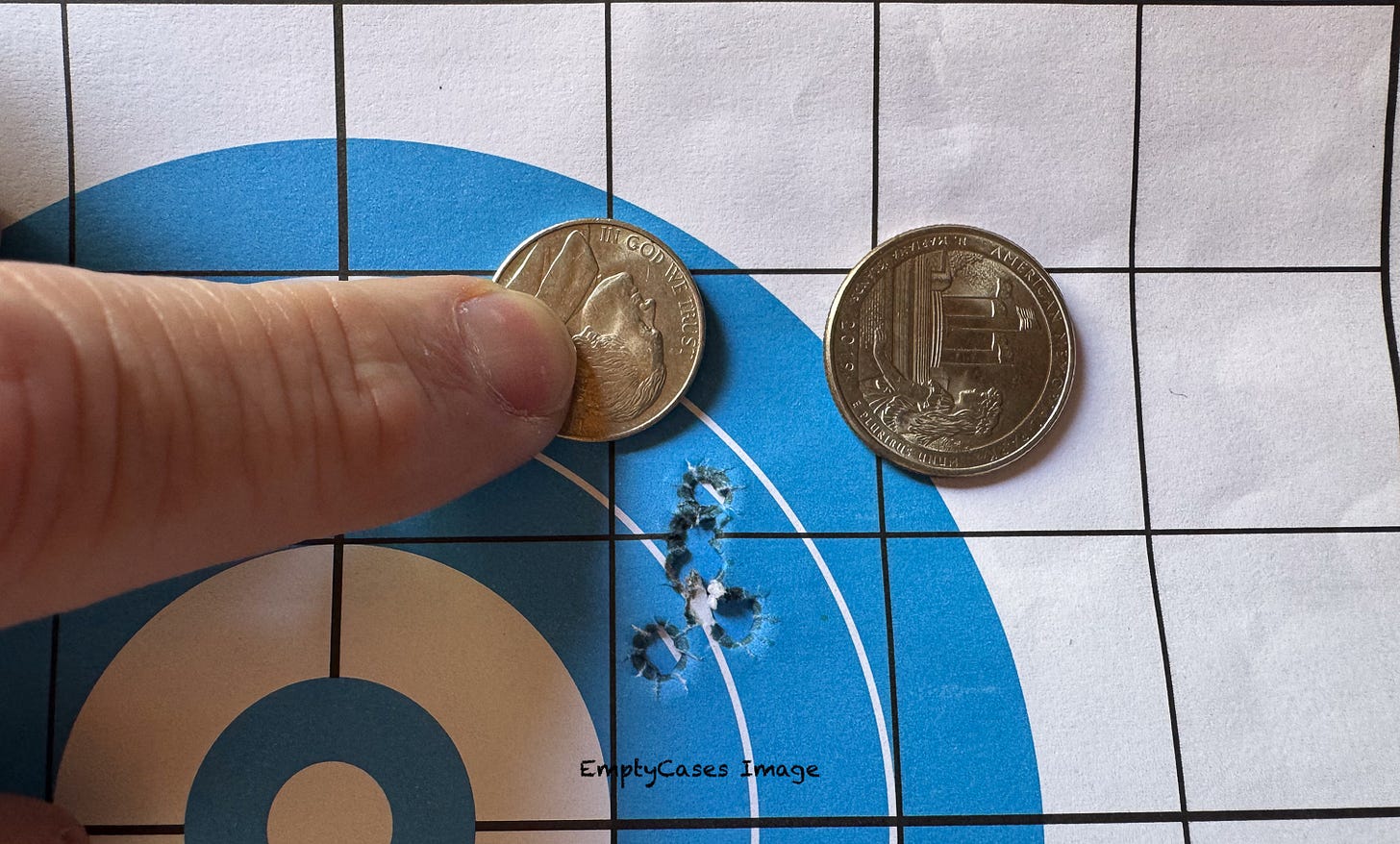
For hunting rifles, I now measure group size with a quarter. If a quarter will cover the three or five shot group, completely, in my book it’s good to go. That means with 0.30-caliber bullet holes the group will measure 0.647-inch or less. With a 0.25-caliber rifle, a group completely covered by a quarter would be 0.698-inch or less. And for a 0.22-caliber rifle it would be less than three-quarters of an inch. If a rifle will meet this standard, it’ll do anything I need to do in the hunting fields. And maybe more importantly, that’s about as well as I can consistently shoot any hunting rifle.
If you’re using a larger caliber rifle like one in 0.375- or 0.45-caliber, you could just make sure the quarter covered the centers – or about the centers – of all the bullet holes. And, if groups that size just seems too damned large for you to be able to kill a buffalo, use a nickel. A 0.30-caliber group that a nickel will completely cover would be right at a half inch. And a group from a 0.375-caliber rifle where a nickel did not allow you to see more than a half of any bullet hole would be about three-quarters of an inch. Just because you measured your groups with a caliper — down to one-thousandth of an inch — does not make you or your rifle any deadlier.

In truth, I’ve been unknowingly applying this concept for a long time when shooting off hand, because I use eight-inch steel plates to evaluate how well a rifle and I work together. If I can’t keep four out of five shots on an eight-inch steel plate, I know the distance to the target is too far for me to consider it an ethical shot. Now, I might be shooting while standing, kneeling, sitting, or from prone with a bipod, it does not matter. That eight-inch steel plate which is about the size of a pancake – at least the pancakes I like – is a great benchmark for field marksmanship. You might like six inch or even 10-inch pancakes, because you like to shoot coyotes or elephants. It doesn’t matter. Just pick a pancake size you think best represents the vital zone of your target animal, and then see if you can reliably and consistently hit it.
For years I’ve also used a snuff can target size – 2.5 inches – as a benchmark for shooting rifles and handguns from the standing, unsupported position. If I can hit a snuff can, four out of five times at 50 yards with a rifle, I feel I’m tuned up and ready for the hunt. Similarly, if I can hit a snuff can with a self-defense handgun, four out of five times from the standing off-hand position at 15 yards, I get that same warm and fuzzy. However, when I’m running practical timed drills with a defensive handgun, I go back to my pancake. Of course, if I’m working on head shots the snuff can comes back out.
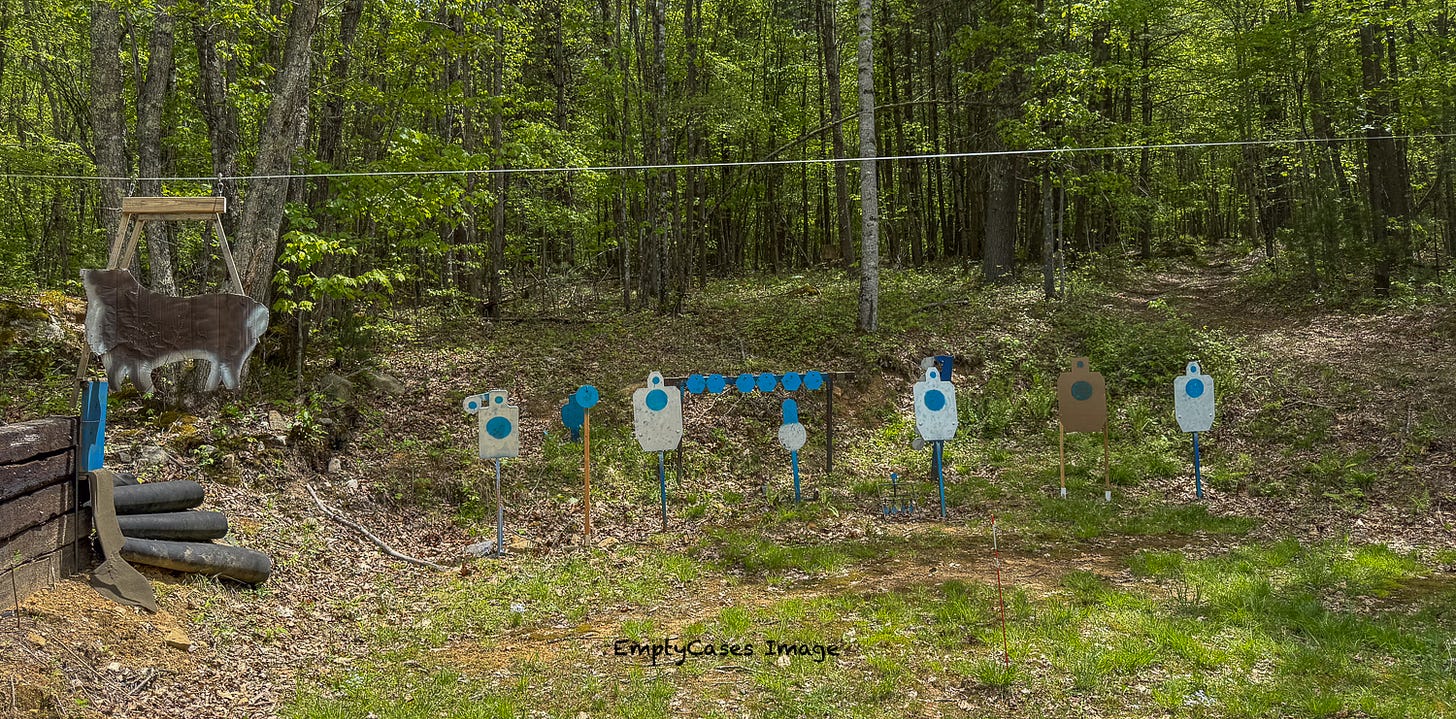
If you look at my handgun range, you’ll notice most all the targets either have pancake or snuff can size target zones. That’s because I have carboard cutouts I can use as stencils to spray paint these zones. Years ago, I stumbled across the Stick-Um-Up, three-inch adhesive targets from Thompson Targets. If you can keep all your shots completely inside one of these, your shooting snuff can-size groups – no ruler needed. I keep a bunch in my range bag. They also offer a 2.25-inch version that comes in its own see-through, plastic snuff can. Imagine that. Thompson Targets has other various adhesive six-inch pancake targets and a larger paper splatter target for those who like eight-inch pancakes like I do.
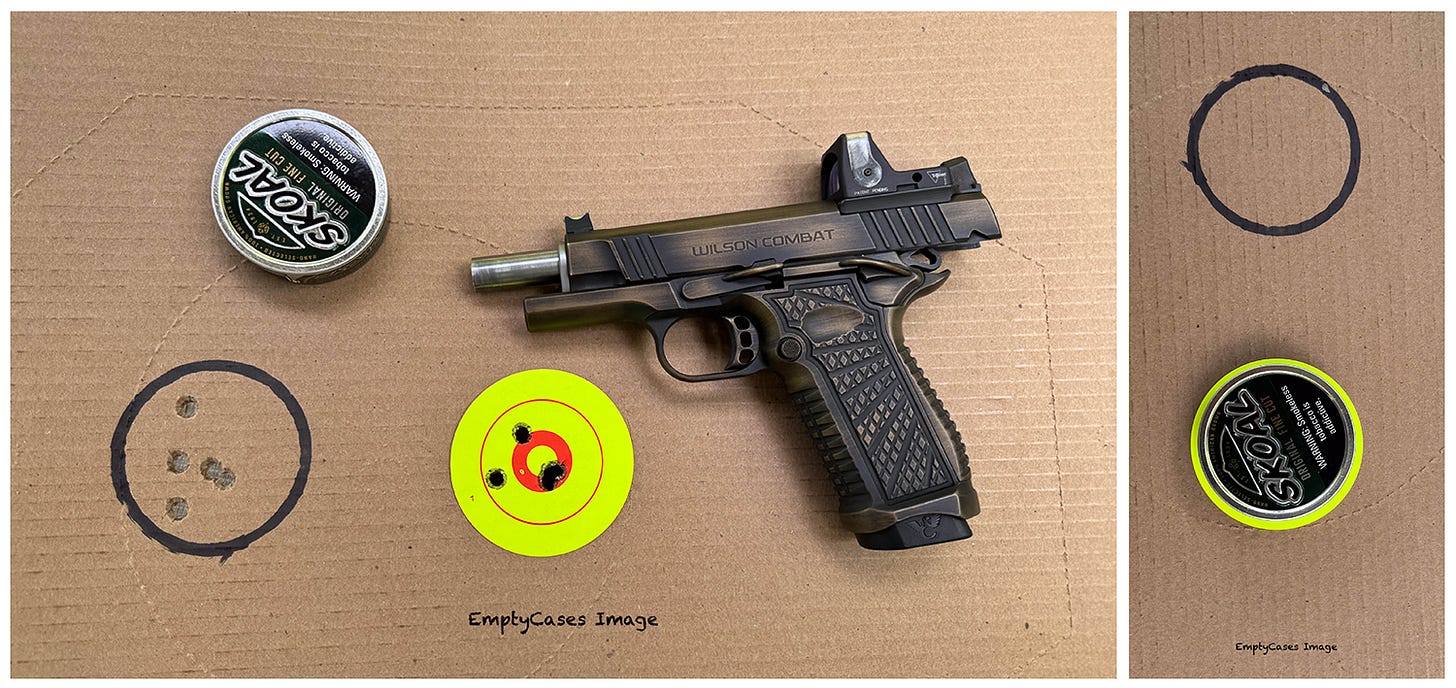
While fancy commercial targets like these are nice, if you have a snuff can and the lid to a one gallon paint can, you can take a Sharpie and make your own snuff can and small pancake targets. If you want an inexpensive and larger pancake target, there’s always the eight-inch paper plate so common to deer camp, and that so many deer hunters have been shooting for so long. Most paper plates are actually just a tad bit larger than eight inches, but they’re close enough, and since you’re not taking a ruler to the range anymore you’ll never know the difference. Paper plates only cost about 16¢ each.
The funny thing is that I never really thought about this extremely practical, non-measuring concept until I was visiting Wilson Combat not too long ago. I got to spend a day with the guys who test fire all their firearms. Wilson Combat offers a precision guarantee with their guns, but they never actually – technically – measure group size. They have small aluminum disks that reflect their precision guarantees, and if the disk covers the groups, the gun passes. It’s a go or no-go evaluation, which is all any hunter or self-defense shooter really needs.
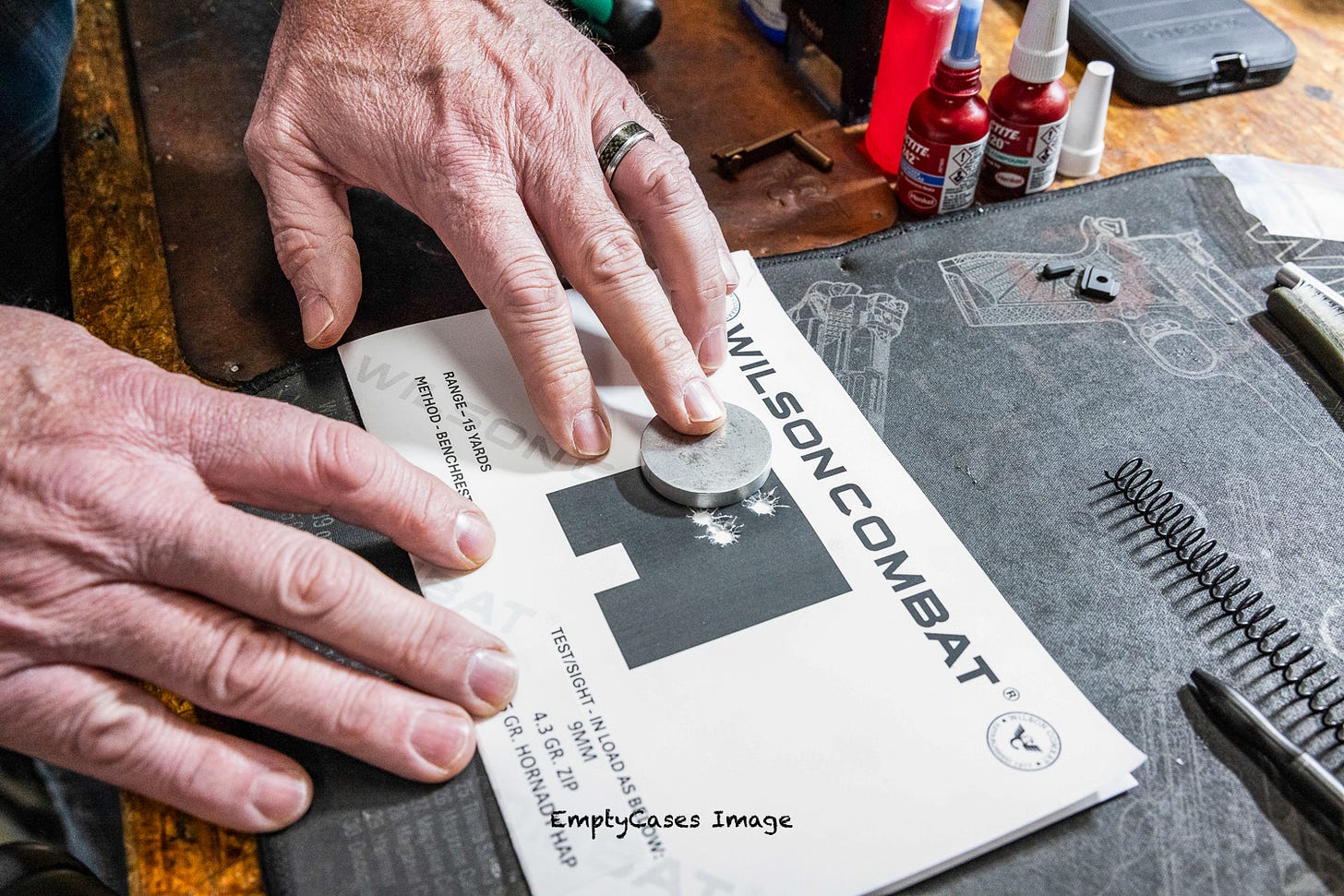
Stupid simple, right?
Sometimes the obvious, is so damned obvious, we just overlook it. You don’t need to spend all your time measuring groups – the group is either good or it’s not. Calipers belong on the loading bench, not on the target range. Partly because a thousandth, a hundredth, or even a tenth of an inch just doesn’t mean that damned much. And too, most of the time, that bad shot that made a good group a bad group is your own damn fault.





I feel better about my paper plates and bing marker. Thanks!
It varies, depending on the firearm, the guarantee, and the distance to target.